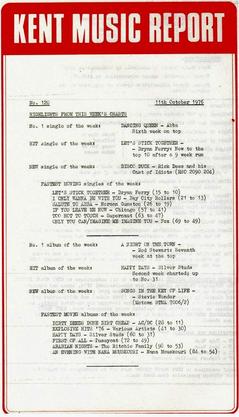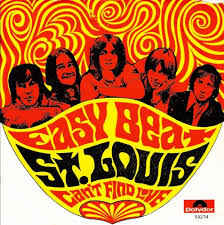Related Research Articles

Songs from the South, subtitled Paul Kelly's Greatest Hits, is a greatest hits album by Australian singer-songwriter Paul Kelly. It was released on 13 May 1997 by Mushroom Records. The album peaked at No. 2 on the Australian Recording Industry Association Albums Chart. It was certified 7× platinum by 2017.

Non-Comprehendus is the debut album from the South Australian rock band Testeagles, which was released on 27 February 2000. It reached No. 8 on the ARIA Albums Chart. It provided two singles, "Turn that Shit Up", which reached No. 54 on the ARIA Singles Chart, and "Underdog" (October). The album was produced by Paul McKercher with mixing by American producer-engineer, Ulrich Wild.
"Jump in My Car" is a song originally recorded by Australian rock band Ted Mulry Gang in 1975. The song was written by Australian singer Ted Mulry and guitarist Les Hall, and was the first hit for the band in Australia. "Jump in My Car" was number one in Australia in 1976 for six weeks.

...Live in Memphis 1997 is the fourth home video by Canadian singer Celine Dion. It was released on VHS on 2 November 1998. The concert was filmed live in March 1997 during the Falling into You: Around the World tour in Memphis, Tennessee.

Live à Paris is the third home video by Canadian singer Celine Dion, released on VHS on 8 November 1996 and on DVD on 17 November 2003. It was recorded live at the renowned Zénith Paris in Paris, France, in October 1995 before an audience of over 6,000 fans, during the D'eux Tour.

The Kent Music Report was a weekly record chart of Australian music singles and albums which was compiled by music historian David Kent from May 1974 through to January 1999. The chart was re-branded the Australian Music Report (AMR) in July 1987. From June 1988, the Australian Recording Industry Association, which had been using the top 50 portion of the report under licence since mid-1983, chose to produce their own listing as the ARIA Charts.

"I've Been Waiting for You" is a song recorded in 1974 by Swedish pop group ABBA, released first as the B-side to the single "So Long". It was included on their album ABBA, released April 1975.
"King Kong Song", written and composed by Benny Andersson and Björn Ulvaeus, is the name of a 1974 recording by Swedish pop group ABBA, included on their album Waterloo. In 1974, the song competed in the Swedish radio chart show Tio i topp, where it stayed in the charts for four shows and peaked at number 4. Also in Sweden, "King Kong Song" was the B-side to "Honey, Honey".

John Farnham, billed under stage name Johnny Farnham from 1964 until 1979, is a British-born Australian pop singer who has released 21 studio albums, 6 live albums, 3 soundtracks, 19 compilation albums, 13 video albums, 3 extended plays and 74 singles.

Eric Hilliard Nelson, known professionally as Ricky Nelson until his 21st birthday when he officially dropped the "y" and simply became Rick Nelson, was an American singer-songwriter. His discography comprises 24 original studio albums, one original live album, various compilation and archival projects, and 94 singles.

The following is a list of albums, singles, music videos and extended plays by British singer Davy Jones, who was a member of the Monkees.

This is the discography for the British pop singer Sandie Shaw.

"Wedding Ring" is a song written by Stevie Wright and George Young. It was originally recorded by the Australian rock group the Easybeats in 1965, whose version reached #6 on the Australian charts.
The Seekers were an Australian folk music group formed in 1962 consisting of Athol Guy, Keith Potger, Bruce Woodley and Judith Durham.
"The Day That My Heart Caught Fire" is a pop song written by Harry Vanda and George Young. It was recorded by Australian pop singer John Paul Young. The song was released in August 1978 as the second single from Young's fourth studio album Love Is in the Air (1978). The song peaked at number 20 on the Kent Music Report in October 1978.
The discography of Australian rock band the Easybeats.

"St. Louis" is a song by Australian rock group the Easybeats, which was released in June 1969. It was co-written by its members Harry Vanda and George Young and recorded as their first single after signing to Polydor Records.
This article is the discography of New Zealand singer John Rowles.
References
- ↑ Mathews, Wallace H. Certified Copy of Register of Birth (Report). Perth: Western Australia District Registrar.
3rd February 1941, Ellesmere Rd., Mt.Lawley (sic)
- 1 2 3 4 Lowe, Daniel (2003). "Australian Chart History". Archived from the original on 21 November 2005. Retrieved 22 March 2009.
- ↑ "David Kent". nla.gov.au. National Library of Australia. Retrieved 20 March 2009.[ permanent dead link ]
- ↑ "ARIA Charts FAQs". Australian Recording Industry Association (ARIA). Archived from the original on 10 February 2009. Retrieved 22 March 2009.
- 1 2 Kent, David (1993). Australian Chart Book 1970–1992 . St Ives, NSW: Australian Chart Book. ISBN 0-646-11917-6.
- 1 2 Kent, David (2005). Australian Chart Book (1940–1969). Turramurra, NSW. ISBN 0-646-44439-5.
{{cite book}}: CS1 maint: location missing publisher (link) - 1 2 Kent, David (2006). Australian Chart Book (1993–2005). Turramurra, NSW. ISBN 0-646-45889-2.
{{cite book}}: CS1 maint: location missing publisher (link) - 1 2 Kent, David (2007). The Australian top 20 book (1940–2006). Turramurra, NSW: Australian Chart Book, 2007. ISBN 978-0-646-47665-0.
- 1 2 3 4 5 6 7 8 9 10 11 12 "Top 40 Radio and the Pop Charts" . Retrieved 22 March 2009.
- 1 2 3 Kent, David. "Australian Chart Book history". Australian Chart Book. Archived from the original on 7 December 2008. Retrieved 22 March 2009.
- 1 2 "Go-Set Magazine Charts 1966–1974". Poparchives.com. Archived from the original on 12 February 2013. Retrieved 22 March 2009.
- 1 2 3 4 5 Lowe, Daniel (2003). "Australian Chart History, Part 1". Archived from the original on 2 February 2008. Retrieved 22 March 2009.
- 1 2 3 4 Lowe, Daniel (2003). "Australian Chart History, Part 2". Archived from the original on 2 February 2008. Retrieved 22 March 2009.
- 1 2 Lowe, Daniel (2003). "Australian Chart History, Part 3". Archived from the original on 15 February 2008. Retrieved 22 March 2009.
- ↑ Kent, David (2009). Australian Chart Chronicles (1940–2008). Turramurra, N.S.W.: Australian Chart Book, 2009. ISBN 978-0-646-51203-7.